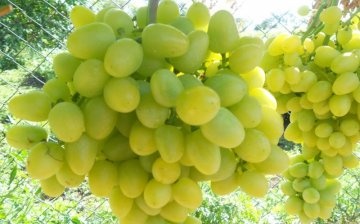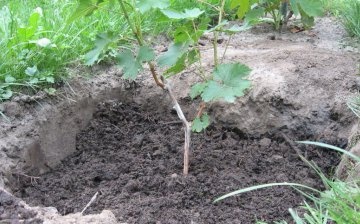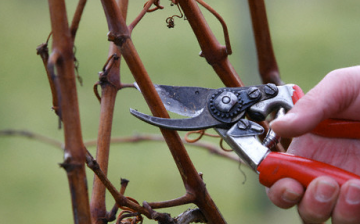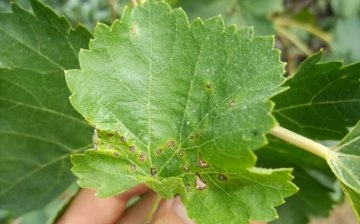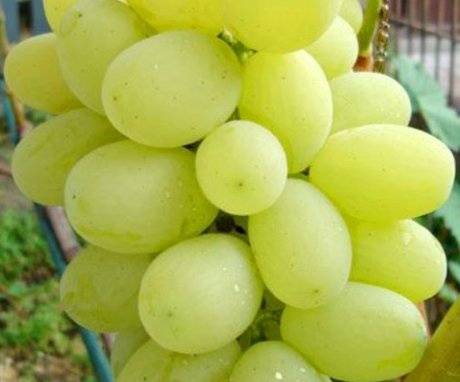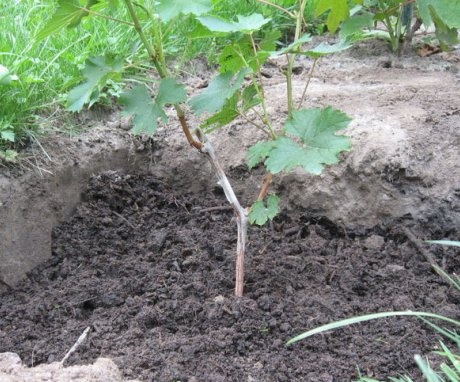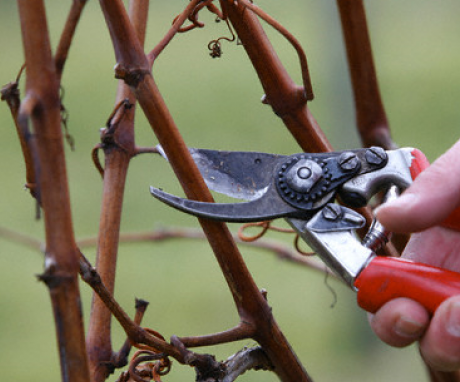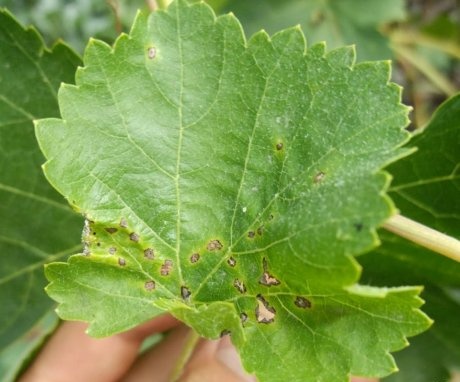Table grape variety "Arcadia": description and agricultural technology
The grapes "Arcadia" were obtained by breeders of the Odessa Institute of Viticulture and Winemaking named after V. E. Tairov, as a result of crossing "Moldova", which transferred resistance to environmental factors and "Cardinal", from which "Arcadia" took on high taste and quality characteristics.
The "Arcadia" variety has an early ripening period and after 3-3.5 months from the formation of ovaries, you can feast on healthy and tasty berries, which are formed quite a lot, due to the high yield of this grape. These factors, as well as good transportability and keeping quality of the crop allowed Arcadia to take a place in the top five main market leaders.
Content:
- Advantages and disadvantages of the Arcadia variety
- When and how to plant grapes
- Competent move is the key to a good harvest
- How to deal with diseases and pests
Advantages and disadvantages of the Arcadia variety
The bushes of the Arcadia grape variety are distinguished by their vigorous growth and rapid development rates, and most of the young vines bear fruit in the first year. Shoots are covered with large carved light green leaves.
With proper care, the "Arcadia" vines are strewn with large loose clusters with large berries. The weight of the bunches ranges from half a kilogram to 2-3 kg. The grapes ripen evenly. The shape of the berries is oval-elongated, egg-shaped or heart-shaped.
Dense, moderately sweet with sourness, the flesh is covered with a strong but thin skin.
Light grapes with green and amber-honey tints have a harmonious pleasant taste: refreshing, light and unobtrusive, which will be appreciated by gourmets. When fully ripe or overripe, nutmeg notes are felt in the taste. Indicators of acidity reach 6-7 g / l, and sugar content 15-16%.
The Arcadia variety has a number of advantageous characteristics:
- high yield, on average gives 22-25 kg per bush
- large-fruited
- uniform ripening of berries
- high keeping quality and transportability
- self-pollination ability
- the ability to pollinate the grapes "Laura", "Talisman" and "Keshi"
- resistance to climatic conditions and frost resistance up to 25-26 degrees
- vast area of regionalization
- mildew resistant
But like all cultivated plants, Arcadia grapes have a number of disadvantages:
- cracking of fruits due to surges in soil moisture
- inability to independently resist gray rot and powdery mildew
- a tendency to overload bushes and crush berries
- sensitivity to cold winds
- high need for lighting
"Arcadia" is ranked among the unpretentious varieties grapes, but to obtain a high-quality and bountiful harvest, some care is still required. And you need to start with the correct fit.
When and how to plant grapes
Planting grape seedlings is an important step in growing a crop and you need to approach this process with all responsibility:
- Choose the right place. Considering that grapes are a perennial and light-loving plant, the southern side of the site will be optimal for its development, without shading and drafts.
- Prepare the ground.It should be fertile and stony, which provides good oxygen and moisture conductivity, but does not allow stagnation of water and oversaturation of the soil with lime and salts.
- Prepare seedlings. For this, a number of procedures are carried out: cut off the seedlings, leaving 1 cm from the bottom to the upper bud, and from the top - 2 cm and place them in a growth stimulator for 48 hours; place the seedlings in sterilized sawdust from non-coniferous trees for two weeks. During this time, the buds should come to life, which indicates the readiness of the plant for planting; hardening by placing the cuttings in the shade or under a canopy for one and a half to two weeks, and then moving to an open space, illuminated by the sun for 1-2 weeks.
- Prepare planting holes. Pits are dug at least 80x80 cm. Potash and phosphate fertilizers are placed on its bottom (250 and 400 grams, respectively). Sand is poured into the second layer, black soil is the third, and humus is the fourth. The hole should be half full.
- Planting seedlings. A support beam and a seedling are placed in the middle of the hole, evenly spreading the roots, and covered with a mixture of fertile soil to the growth level. The soil is well tamped and spilled abundantly with water. When the top layer of soil dries out enough, it should be loosened. With an interval of two weeks, two more waterings are carried out, after which the soil is well loosened and mulch.
For planting cuttings "Arcadia" equally suitable autumn and spring time. In April-May, annual seedlings are planted, and the end of May and the entire first month of summer is suitable for planting a green vegetative grapes.
In the fall, seedlings begin to be planted in October and continue until the very frost. During this period, the planted grapes should be covered for the winter to prevent freezing. Peat, pine needles or sawdust are used for shelter.
Competent move is the key to a good harvest
For "Arcadia" to develop well, you need to adhere to the correct agricultural technology, which consists of watering, feeding, pruning and preparing grapes for wintering:
- Irrigation. Young seedlings need regular and abundant watering... The soil should not be allowed to dry out, otherwise it will be difficult for the grapes to take root. Adult bushes are watered as needed, and the soil is mulched to retain moisture. For complete hydration root system many growers use special irrigation systems, burying pipes in the ground near the roots.
- Top dressing. For fertilizing "Arcadia" it is recommended to use liquid fertilizing. So the root system will fully assimilate useful trace elements. The periods of top dressing should coincide with the important stages of plant development: the period of intensive growth, the period of budding, the period of flowering and the formation of bunches. Used as fertilizers mineral, nitrogen and organic blends.
- Pruning. Annual pruning is done to form bushes and remove weak and damaged vines. Also, this procedure is performed for thinning plantings. The purpose of pruning is to create optimal conditions for development and fruiting. Indoor vines must receive adequate oxygen and sunlight. Pruning spend at any time of the year, except for winter. The first pruning is carried out when the shoots grow 10-15 cm, leaving two vines on the handle, and four on the seedling. In the spring, sanitary pruning is carried out, removing dry and damaged shoots, and in the fall, the vines are shortened and thinned out. Shoots are cut farther from the fruitful and at right angles.
- "Arcadia" is able to withstand frosts below 20 degrees. But in the northern regions it is required shelter for the winter... To do this, the cut vines are bent to the ground and strengthened, sprinkled with spruce branches on top and covered with foil. Before covering, the plants need to be watered well.
How to deal with diseases and pests
Variety "Arcadia" has a genetically inherent immunity to mildew, but preventive treatments will not be superfluous.To do this, the grape bushes are sprayed with a three percent solution of nitrafen, Bordeaux liquid or ferrous sulfate.
To prevent the development of fungi, which include oidium, to which "Arcadia" has no immunity, the following means are used:
- manganese solution
- sulfur-containing solutions
- diluted in water mullein
"Arcadia" is loved by many pests. It is often attacked by wasps, ticks, birds, ticks and other harmful insects, including fleas, mining moths, leafworms, weevils, and goldweed.
An effective protection against wasps is the installation of nets, baits and traps that lure insects, distracting from the crop.
Natural enemies such as cats will help scare off birds. Also, scarecrows are installed near the vineyards or ribbons of bright fabric or shiny material are tied to the vines, which develop in the wind and scare away pests. For the prevention and destruction of harmful insects, insecticidal agents are used, and acaricidal agents are used against ticks.
Arcadia grapes are beneficial for growing both for themselves and for sale. The berries have an attractive appearance and excellent taste characteristics. A competent approach to caring for this variety will allow you to get annual high-quality and abundant harvests. And the berries are suitable not only for fresh consumption and preparation of culinary delights, but also for making delicious aromatic wine.
More information can be found in the video:



